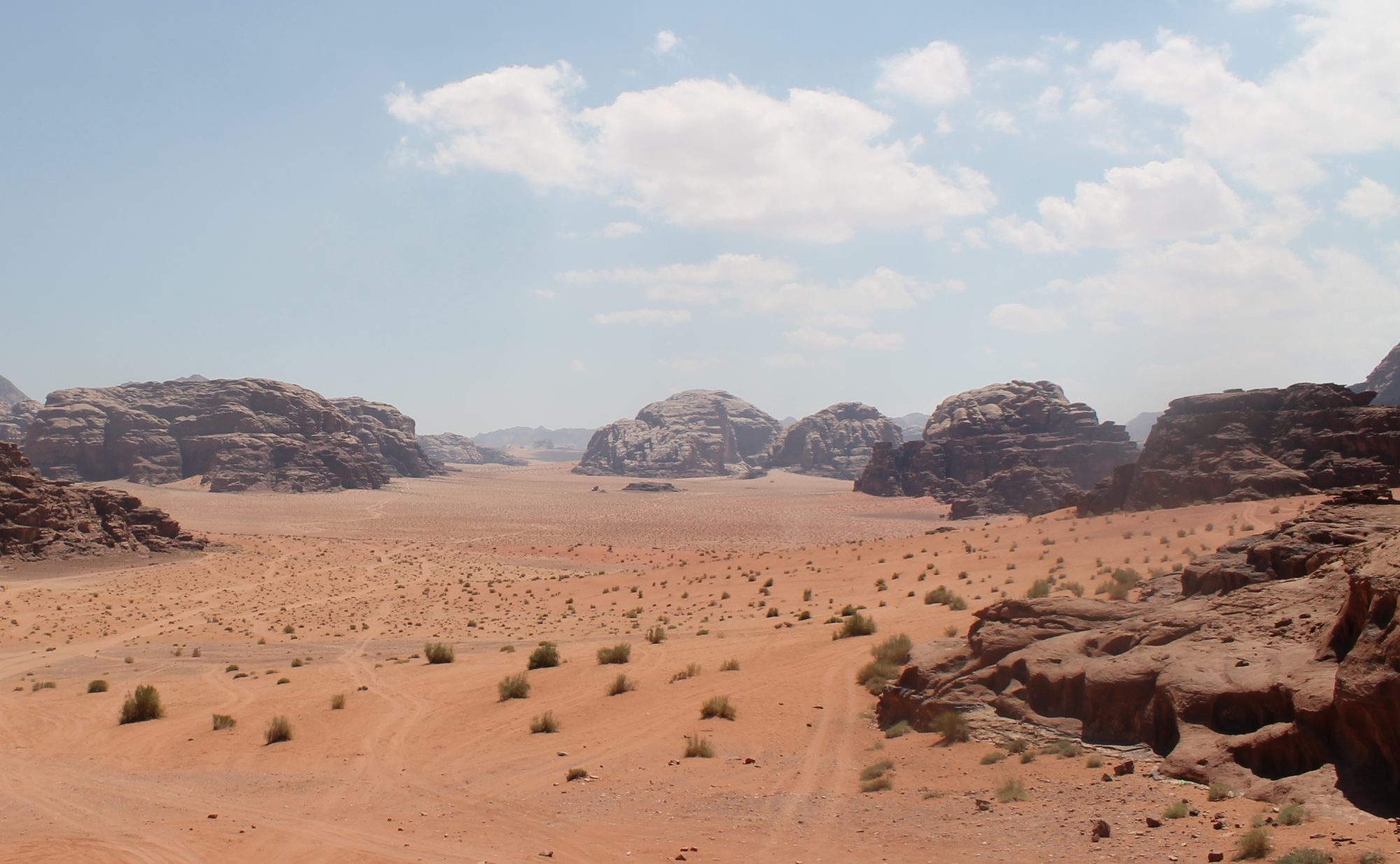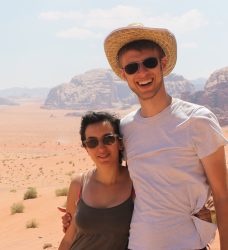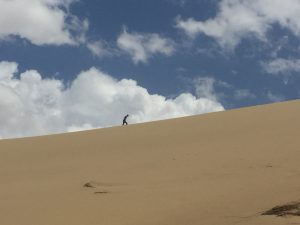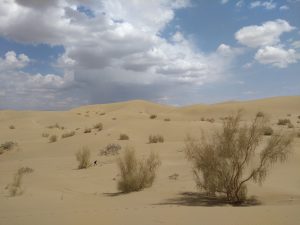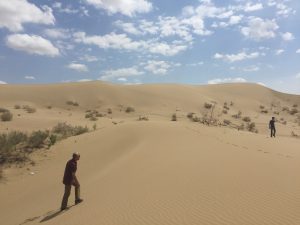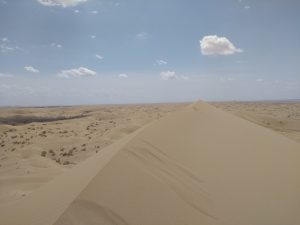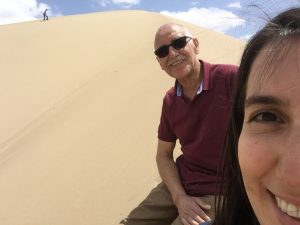Monday, the 9th of April
After staying in Isfahan for a couple of days, we went on a desert excursion nearby. We were told there were some nice views in a town just 100 km away, Varzaneh. On the way there, we spotted some pigeon towers:
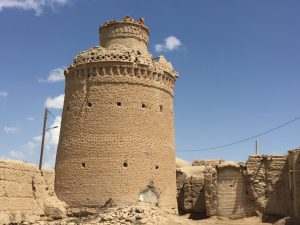
(In the olden days, the pigeon poop was used as fertilizer. So these towers were literal poop machines. The towers were once all over Isfahan as well, about 2 000 of them. If you know they housed 14 000 pigeons per tower, that gives you about 28 000 000 little pooper troopers!)
When we arrived at the sand dunes in Varzaneh, we stumbled upon some sort of theme park in the desert, complete with bouncy castle, death ride and ATV rides. It was hilarious to see a bunch of Iranian school girls in chador driving ATVs through the dunes while shrieking their lungs out. When they met Wafa and Abdel though, they thought they were married, instead of father-daughter. Says a lot about society here…
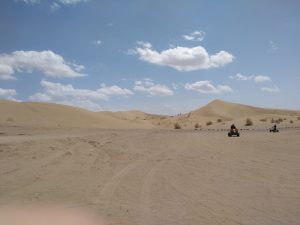
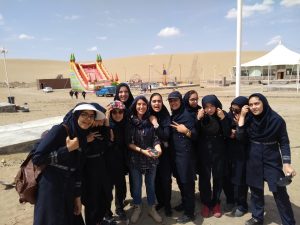
The desert itself was of course very photogenic:
There was also a salt lake nearby, where we had lunch. Funnily enough, it had rained the day before (our luck, rain in the desert…), so it wasn’t that impressive:
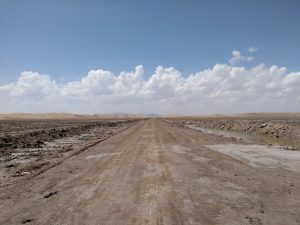
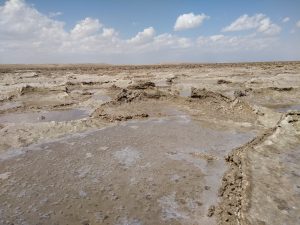
Driving through that mess with the car wasn’t such a great idea either. Afterwards, it was caked in salt top to bottom, so we had to go to a local carwash:
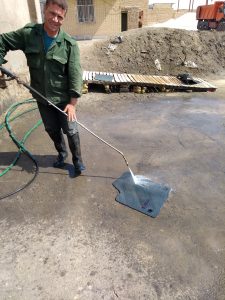
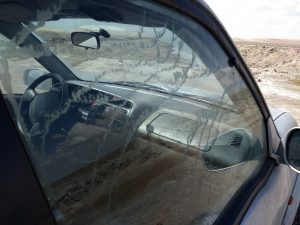
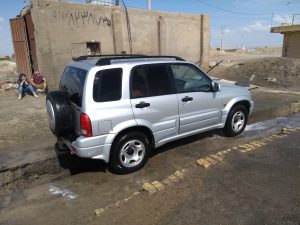
(That is salt on the windows, from driving through deep puddles. The carwash dude gave Suzy the best carwash of her life with a pressure washer, chassis and all.)
While visiting the Ghoortan citadel nearby, we met another busload of screaming school girls. Their knowledge of English was pretty limited, so all we got was ‘Hello!’ and ‘How are you!?’ a thousand times over.
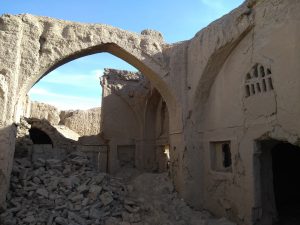
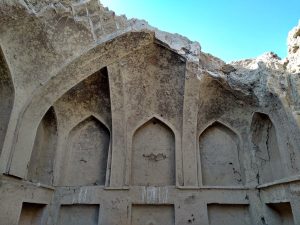
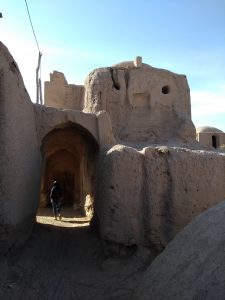
Tuesday, the 10th of April
Another big trek (600 km) on Tuesday, from Isfahan to Shushtar, in the South West of Iran, not far from the Iraqi border. Nothing much happened on the drive, but we saw some beautiful and very diverse landscapes. From driving through the southern end of the Zagros Mountains, with very deep ravines, over green and lush valleys (where they even grew strawberries), we ended up in very red and arid rocky hills. By mid april temperatures already reach 33 °C. Locals claim it gets as hot as 70 °C in summer!
This region of Iran hasn’t exactly been touristically developed yet, we noticed. After seeing a couple of hotels, one more derelict than the other, we found ourselves some clean but overpriced rooms in the center of town. Dinner, although with a view, was also underwhelming. As nobody spoke a word of English, we were lucky to have Abdel with us: 90% of the population here is Arab!
Wednesday, the 11th of April
As it would be a very hot day, we of course prepared a day with lots of sightseeing. First stop was Susa, ancient Elamite and Persian city. The Elamite kingdom was one of many in the region, before the Persian Achaemenid rulers Cyrus and Darius conquered them all and created the first world empire in the 6th century BC. Sadly, the site was thoroughly looted by the French in the 19th century, so most of the interesting pieces are in the Louvre now.
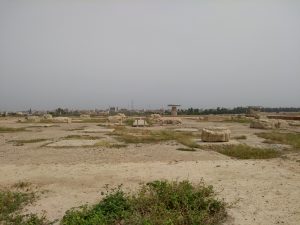
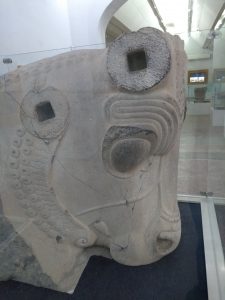
Next stop was Chogha Zanbil. This ancient Elamite ziggurat (= multilevel temple, their version of the pyramid) was only rediscovered beneath the sand in 1935, and was therefore beautifully preserved:
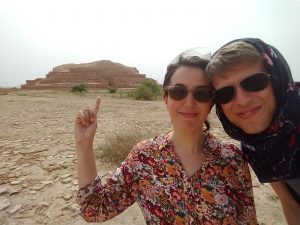
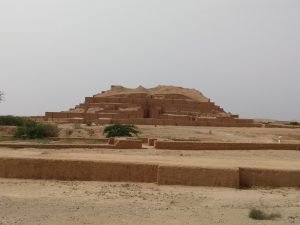
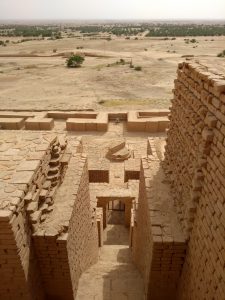
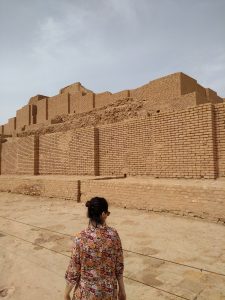
(Normally you don’t get to climb the ziggurat itself, but we found a guy. Yay for destroying timeless archeological treasures!)
To give you an idea of the size of this thing, the square base is 105x105m, and it once stood 52 meters tall. Nowadays, only 26 meters remain.
After a huge dinner in the local McDonald’s/Pizza Hut/KFC notsofastfood crossover, we visited the Historical Hydraulic System in Shushtar. This is basically a complex system of dams and canals that powers something like 36 mills. When you walk through it, it looks like a maze of water filled canals and little waterfalls. Parts of it are supposed to date all the way back to the Achaemenids (See also: Susa).
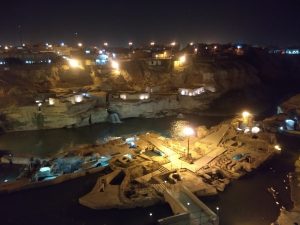
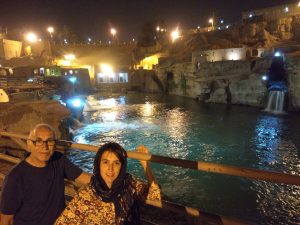
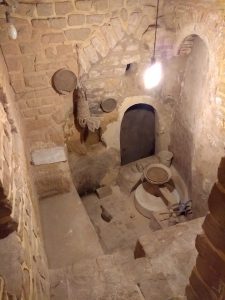
On our way back to the hotel, we met a young guy who tried to make something clear to us. Using google translate, he finally managed to get across he wanted to kiss Wafa. Teehee. We beat yet another hasty retreat, but he kept following us. Now he said something along the lines of ‘You don’t have to worry about the others if you want to elope with me’. Funny guy. We think he was a bit simple or something.
Thursday, the 12th of April
Another 600 km drive, from Shushtar to Shiraz this time. This one was a bit more boring, not that much to see. During the drive, we passed the 10 000 km mark of our trip though! At this rate, we’ll do 50 000 km by the end of our trip, instead of the projected 40 000…
Near the end of the day, we stopped over by Bishapur, which was once the Sassanid capital. The Sassanids were the ruling dynasty of Persia, roughly from the 3rd until the 7th century AD, which put them constantly at odds with the (Eastern) Roman empire. Bishapur itself was partly built by Roman legionary captives: Shapur I inflicted several defeats on the Romans in the 3rd century, even taking the Roman emperor Valerian captive in 260 (only time this happened in Roman history!).
The visit was cut short by a passing thunderstorm, so we headed on towards Shiraz. Finding a place to sleep had been really difficult here, as most hotel rooms are booked way in advance during high season (April – May). We were lucky to find Mehdi’s guesthouse through Facebook. One of the best places we’ve stayed in Iran so far, we can’t recommend it enough!
Friday, the 13th of April
Shiraz is the Iranian city of gardens and poets. It was mostly built and renovated during the Zand dynasty of the 18th century. Our first visit was to the Pars Museum, a small pavilion in a lovely garden:
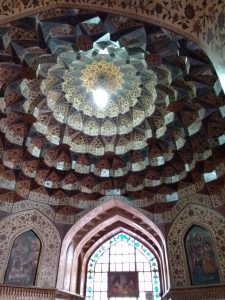
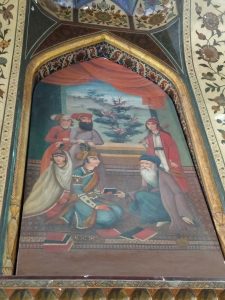
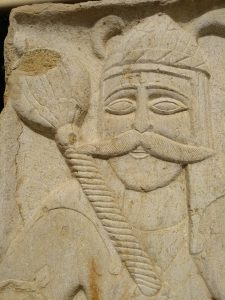
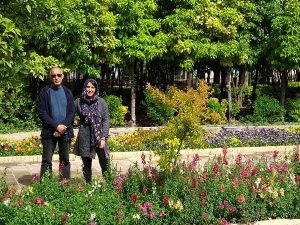
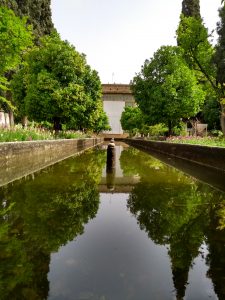
Next was yet another holy shrine, this time for three brothers of Imam Reza (See also: Qom). We’ve met most of the family now, can’t wait to finally meet the guy himself in Mashhad. The shrine itself wasn’t particularly noteworthy, but Tom managed to lose our guidebook on Iran. We later learned from a guide somebody picked it up and offered it to a couple of German tourists, who simply accepted it as theirs. Bloody Germans! First they start two world wars, then they steal our book!
Lucky for us, Mehdi came to the rescue: he pointed us towards a local bookshop that actually had one last copy of the Lonely Planet, albeit an older edition. Crisis averted! We rely rather heavily on our guide to find places to sleep, restaurants…
At sunset, we visited the mausoleum of Hafez, somewhat like the national poet of Iran. Apparently every Iranian can quote some of his verses by heart. We thought it would be a quiet and serene place. We arrived to find the place flooded by Iranians though:
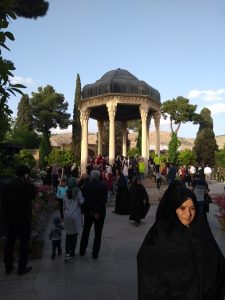
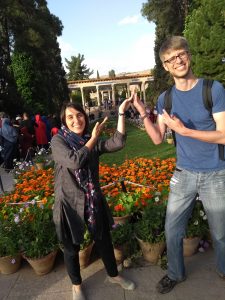
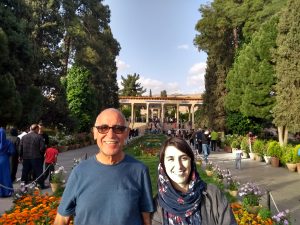
(Something weird happened in that last picture. It’s unedited. Hafez’s ghost passing over Wafa?)
Saturday, the 14th of April
Today: Persepolis!
Today also: another Iranian holiday!
Result: lots of people on site. The palace complex is rather big though, so save for a few choke points, it didn’t get too crowded. Persepolis was built by Darius, the second of the Achaemenid emperors, around 500 BC (See also: Susa). It was extended mostly by his son Xerxes (who we in Europe know as the bad guy at the battles of Marathon, Salamis…). Together with their (grand)father, Cyrus the Great, these three are still revered by Iranians and historians alike. They are known as fair and just kings, permitting religious freedom, respecting the customs of conquered nations and being all-round cool dudes. At Persepolis, the British found an inscribed cylinder, which bears the first declaration of human rights, written 2500 years ago! Of course they promptly put it in the British Museum, like so many other looted treasures. To give you an idea how well liked these guys were, even the Old Testament has nothing but praise for them.
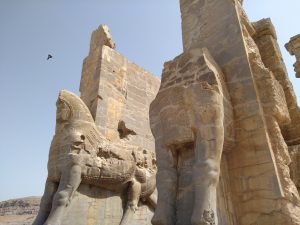
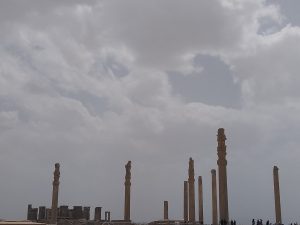
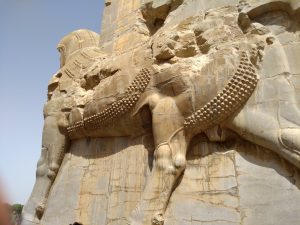
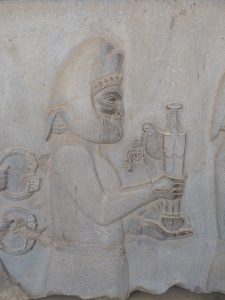
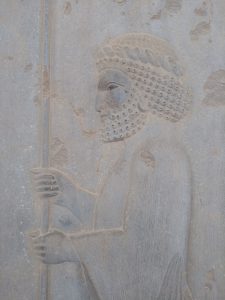
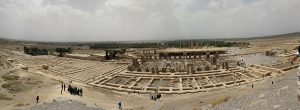
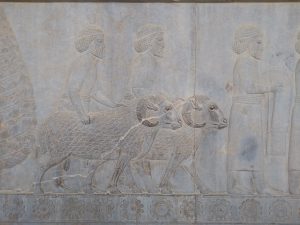
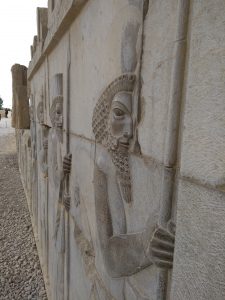
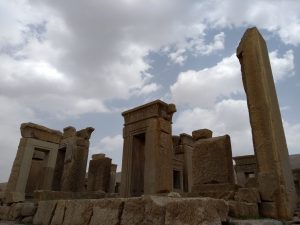
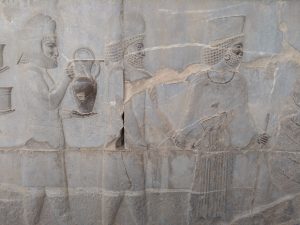
(There is one gigantic relief in which all of the conquered nations pay tribute to the Persian emperor, each in their traditional garments, bearing typical gifts. Everything is depicted with the utmost respect for these nations.)
The Achaemenid line (and Persepolis itself) was ended by the invasion of Alexander the Great. Darius III was killed by one of his lieutenants while on the run, and Persepolis was burned to the ground near the end of the 4th century BC. It’s not clear why Alexander did this, as history also lists him as a rather tolerant and open guy. One theory: it was an act of vengeance, as the Persians burned Athens a 150 years earlier. According to our local guide, this doesn’t make any sense though, as Alexander was Macedonian, not Greek. And also, the Greeks started it! (By burning Sardis a couple of years earlier.) According to another theory, Persepolis was known as the richest and most beautiful place in the world at that time. Alexander then burned it, to prove he was powerful enough to eclipse all the wealth and power that was accumulated at Persepolis.
Near Persepolis is the site of Naqsh-e Rostam, the necropolis of the Achaemenid emperors. Darius and Xerxes were buried there, along with a couple of their descendants. Their tombs were hewn from the rocks in a hillside. Lots of erosion because of this. Interestingly enough the site was recuperated by the Sassanids some 600-700 years later (See also: Bishapur). Beneath the Achaemenid tombs, they cut several reliefs from the rocks, depicting their greatest exploits. Also on site: a square tower, thought to date from Achaemenid times. Its function is unclear: a burial chamber, a treasury…?
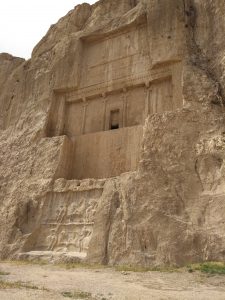
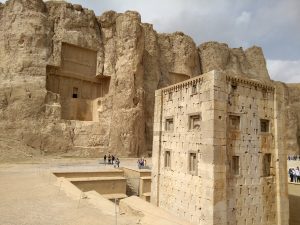
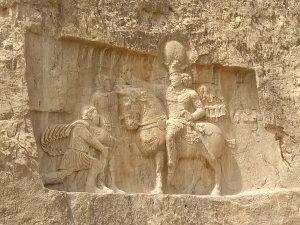
(This last scene is Roman emperor Valerian being taken captive by Shapur I (See also: Bishapur).)
Some 70 kms away, Cyrus the Great himself is buried, at Pasargadae. We passed by it, but nothing much remains, only his funeral tomb. Cyrus actually started building his own capital city at Pasargadae, but it fell into ruins after Darius built Persepolis.
In the evening, we had dinner in a very nice setting, although the food itself was a bit meh:
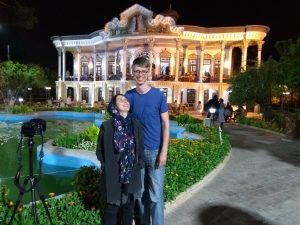
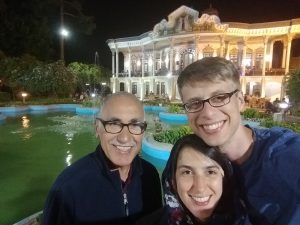
Afterwards, Tom joined Mehdi and his friends for a game of football. Great fun, until he decided to go for a header. He missed the ball a bit and it landed straight on his glasses. Result:
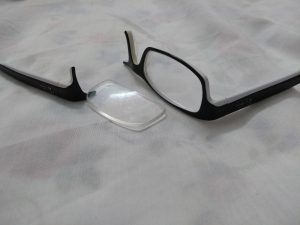
(Luckily he has a spare pair…)
